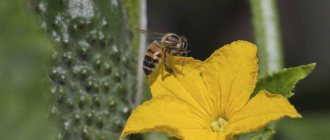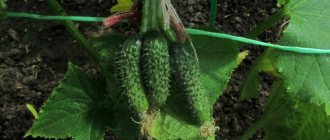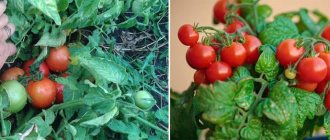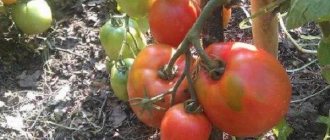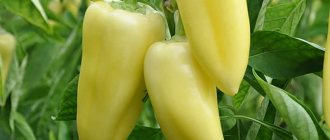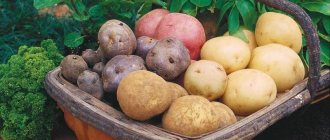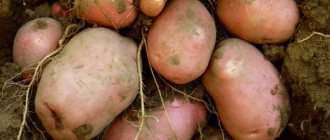Many summer residents prefer to grow winter vegetables. This allows you to get the harvest at the earliest possible date. Onion Radar is suitable for winter growing and spring planting. The variety is high quality, has an excellent taste, and produces a bountiful harvest. Its bulbs are very large and juicy.
| Maturation | Type | Color | Life form | Taste |
| Average | Bulb | White | annual | Mild-sharp |
Selection history and description
In order to grow winter onions, only hybrids are suitable. The Radar F1 variety is an example of just such a hybrid origin, as indicated by the letter F1 in the name. It was the result of hard and long-term work by breeders from Holland.
During the experiments, they managed to obtain a strong, massive onion weighing from 160 g (rarely up to 350 g), with a regular round shape and a bright yellow dense husk. Onion feathers are thick, tall, dark green in color, on which a faint light tint is barely noticeable. Even with light snow cover, it can withstand frosts down to minus 20 degrees. Winter onion Radar is a relatively young variety, bred two decades ago. It is classified as a medium-ripening type of onion (it will take 265 days to grow).
The main advantages and disadvantages of the variety
Advantages of the Radar bow:
- high productivity;
- ease of care;
- resistance to frost, bolting, diseases and pests;
- long shelf life;
- high germination of seedlings;
- possibility of universal use;
- ability to adapt to climatic conditions.
The downside of the variety is lower yield than other spring crops.
What is the difference from others
Let's compare Radar with other popular varieties of onions using the table:
| Variety | Ripening period | Productivity, c/ha | Bulb shape | Bulb weight, g | Taste |
| Radar | Early ripening | 159-250 | Transverse elliptical | 80-95 | Peninsular |
| Karatalsky | Early ripening | 200-440 | Round | 50-120 | Peninsular |
| Botherus | Mid-early | 200-400 | Transverse elliptical | 60-80 | Spicy |
Advantages of the variety
Speaking about the Radar onion and looking at the description of the variety, it becomes obvious that it has a lot of advantages:
- It grows at the end of May or a little later (depending on the region), which is important, since last year’s reserves have already been eaten.
- Strong and dry husk, strong internal scales serve as protection from frost (the variety is resistant to cold), helps to be stored for a long time without changes in appearance and taste.
- Gardeners note the wonderful sweetish-sharp taste of Radar onions.
- The variety is high-yielding.
- Onion sets have almost 100% germination rate.
- It can be stored for a long time, which is not typical for winter varieties.
- Onion Radar is less susceptible to disease than others and is more resistant to pests.
Why gardeners love winter varieties
Every little thing counts for a caring owner. Therefore, many of them see advantages in planting winter onions:
- The harvest ripens half a month earlier than when planted in the spring.
- Vegetables planted before winter are almost not susceptible to diseases such as powdery mildew.
- In autumn, it costs less than in spring.
- No need to water.
- In the fall, gardeners have more free time than in the spring, with the onset of the new dacha season.
- Onion sets do not tolerate temperature changes and dampness, so having planted them before winter, gardeners do not worry about the safety of the bulbs.
How to choose the right planting material
In order for the harvest in the future to please, be tasty and have all the features inherent in the variety, it is necessary to carefully approach the choice of seed material. You can buy it in the store, or you can grow it yourself.
- The onion head should look strong, without visible signs of disease or rotting.
- The size of the onion should not be too small, but a large one is also not suitable. 1 cm in diameter is the optimal size for planting.
- There should not be the slightest hint of germination.
- Oatmeal is a non-standard onion. It is also suitable for winter planting.
These 2 categories (1 cm in diameter and oatmeal) are the most suitable for winter growing. The larger the bulb size, the greater the risk of bolting next year. Very large specimens are not suitable for turnips; they can be planted on greens.
Requirements for winter planting material
To plant before winter, you should carefully consider the planting material. It must meet the following requirements:
- the bulb should be healthy and dense;
- the diameter of the set should not exceed 1 cm - the smaller the onion, the smaller the arrow will be.
Before planting, onions must be sorted and sorted.
Despite the fact that, according to statistics, the germination rate of the Radar variety is close to 100%, the planting material should be checked.
Landing dates
When to properly plant winter onions Radar is determined depending on the region of residence. In the central regions of Russia, in the Moscow region, in the Leningrad region, in the northern regions and in Siberia, this is most likely October, and in more southern regions, in Kuban, in Ukraine - later, in November.
You need to focus on weather conditions. Radar onions are planted 2-3 weeks before the arrival of stable frosts and permanent snow cover. This is necessary so that the bulbs have time to take root, but do not begin to grow. If you hurry and plant early, they will sprout. Of course, this is not so scary, the feather will freeze, but the bulb will not. Frozen leaves will become a gateway to infection and disease. It’s not a fact that the onion will rot, but it’s not worth the risk.
Landing place
An important role for the future harvest and its quality is played by the choice of site for growing Radar onions, which do not like low and cold places. It should be:
- high; light;
- well ventilated;
- without accumulation of groundwater.
Otherwise, the onion will constantly suffer from peronosporosis (from dampness) and wither away. In this case, you cannot expect a big healthy harvest.
The beds are prepared in advance for winter planting. This is done so that the soil has time to settle, otherwise, as it settles, it will drag both the bulbs and seeds with it.
The Radar variety, like any other, prefers nutritious, fertile soil. But you can’t add organic matter immediately before planting. But onions love ash, potash fertilizers, eggshells. For him, ash is like a delicacy:
- nutrition;
- soil antioxidant;
- antiseptic.
Onions get along well with carrots and strawberries.
Onion Radar - preparing sets for planting
Even if you bought seed right before planting, it should be prepared. During storage, the seedlings could become saturated with a large amount of moisture, which is a favorable environment for pests and disease.
- First of all, dry the seedlings. To do this, lay it out in one row on a cotton cloth and leave it in a warm place for at least a week. Right before planting, the bulbs must be processed in 2 stages.
- Prepare a saline solution at the following rate: for every liter of water, add 1 tbsp. l. powder. Heat the water to 60 degrees and immerse the seed in it for 5 minutes, then place it on a sieve and let the liquid drain.
- After this, the seed material should be disinfected. To do this, the seedlings are immersed in a concentrated solution of potassium permanganate for 30 minutes. The next process is washing the material with clean water and drying it from moisture.
Landing instructions
Onion Radar, namely its planting and care, is not much different from the process of planting other varieties.
There is no need to make holes for each onion set. Furrows are dug 4-5 cm deep. If the soil in the area is dense, it is advisable to add sand to the bottom of the row.
- The planting depth of the bulb is 2-3 cm. It is simply lowered into the groove and placed without pressing.
- The distance between the rows is 20-25 cm, between the onions - 5-6 cm. If you want to get a larger onion, the gaps should be larger.
- If there is not enough space for planting on the site, they are planted on the greens along with the bulbs on the turnip, and in the spring they are pulled out and the onion is pulled out for a feather. Moreover, onions often sit on greens, almost one to one.
The grooves can be filled:
- compost;
- peat;
- sand.
Some gardeners fill it with small rotted sawdust. You can simply fill it with soil, take a rake and level the soil.
If the climate in the region is very harsh, it is advisable to cover the bed with spruce branches. You can cover it with cut velvet flowers and carrot tops. This will help the onions not to freeze.
Onion Radar - photo of the variety
Many gardeners consider Radar onions to be the most popular among other varieties of winter crops. The variety allows you to harvest a large harvest, is less susceptible to disease, has good taste, is stored for a long time and is suitable for transportation. To get a high-quality harvest, follow the conditions not only for growing onions, but also for planting them.
Care in spring and summer
Onions planted before winter sprout depending on the region of growth. In the central regions of the country - mid or late May, in the southern regions - earlier.
As soon as the young feathers have grown to 10-12 cm, it is necessary:
- remove covering material;
- loosen the rows;
- cultivate the greens and soil.
Over the winter, the soil has become compacted, so it is necessary to give the roots access to air, and at the same time pull out the weeds that have managed to sprout.
To treat onions, experienced gardeners advise adding the preparation M Bioconstructor Ekomik Harvest: into the soil - pour a little directly under the root. Spray the leaves with the same solution.
M preparations do not contain chemicals, are used as a preventive measure, and can delay the onset of the disease. They enhance soil fertility and help grow environmentally friendly crops.
You need to care for winter onions as follows:
- Water in a timely manner, do not allow the soil to dry out;
- loosen so that the ground is soft;
- remove weeds.
Prevention from diseases and pests
According to the characteristics of the variety, Radar has good immunity, is not susceptible to many diseases and is able to withstand the attacks of insect pests. But to prevent the yield from falling, it is necessary to exclude the addition of diseases. A great danger to onions is the onion fly, which has joined downy mildew.
Read also: How to care for strawberries: useful tips and features
How to get rid of onion fly
Both chemical and folk remedies are suitable for treatment:
- Treatment can be carried out with Aktar, Muhoed or Karat Zeon.
- The spaces between the onion rows can be planted with carrots, marigolds, valerian, and mint. This aroma emanating from plants repels insects.
- Before planting the seed bed, it needs to be soaked in a weak solution of potassium permanganate.
- High-quality crop rotation can protect against onion flies.
Downy mildew
The disease is very easy to identify: a gray coating appears on the feathers. If treatment is not started in time, the disease spreads to the entire feather, which leads to the death of the entire plant. The disease is actively transferred to other healthy plants. The yield and quality of turnips decreases, and keeping quality deteriorates.
Prevention from downy mildew:
- follow the rules of crop rotation;
- plant carefully selected material;
- process the sets;
- sprinkle the beds with wood ash once a week;
- Spray the onions with Bordeaux mixture once a month.
I liked the Radar variety for its unpretentiousness, frost resistance and high yield. Since it ripens early, I add it to dishes already at the beginning of summer. I was surprised, I put in a little effort and got a good harvest of huge bulbs.
My neighbors told me about this variety. I decided to grow sevok from seeds. Sevok was born resistant to diseases and frost-resistant. I like its taste. In addition, it ripens earlier than its relatives. I advise you to grow only Radar onions.
Harvesting and storage
The Radar onion is considered fully ripe when the feather “lays down”. There are cases when the feathers are thick and do not lie down, although due to the period of ripening, visible signs or due to weather conditions, it is time to remove the onion. Then it is necessary to artificially place the feather.
- After removing the onion from the ground, it must be thoroughly dried. This can be done in an attic or a well-ventilated shed. Under no circumstances should you dry it in direct sunlight.
- The onion is dried along with the feathers until the neck is completely dry and thin.
- After that, the dried feathers are trimmed in this place, the roots are trimmed (they are also dry), and the onion is put away for further storage in a cool place, for example, in a cellar or underground.
Radar has good keeping quality, which cannot be said about other winter varieties.
Subject to the above growing rules, winter onion Radar germinates in early spring and pleases the eye, promising a future generous harvest. In addition, green onions are the first vitamins on our table, so necessary after a long winter.
Onion Radar - description of the variety
The crop belongs to the winter mid-season varieties. The bulb matures completely within 9 months from the moment the set is planted. The onion head is dense, slightly flattened with juicy flesh. The plant has dark green leaves with a shiny surface. Fully ripened bulbs, subject to proper care, can reach a weight of up to 500 g.
- The scales are golden in color, fit tightly to the fruit, are dry and reliably protect from frost. If the winter is without snow, the bulbs in the ground can withstand frosts down to -15 degrees. During a snowy winter, you don’t have to worry about the harvest at 25 degrees below zero.
- Onions of the Radar variety are well transported and stored for a long time. You can cut the greens in early May and harvest in mid-June. If you want to harvest the onions earlier, then plant the sets before winter a month before the usual planting date.
- The crop is resistant to most diseases, but if growing conditions are violated, onion flies may appear or the plant may be affected by fungus and rot. To prevent this, carry out timely prevention against pests and diseases in early spring.
- It is also important to follow the rules of crop rotation. So, it is not recommended to grow onions in one place for more than 2 seasons, after potatoes, legumes and carrots. Onions develop well in soil after growing garlic, mustard and most cereals.
a brief description of
The description of the Radar variety, made by experienced plant growers, is accompanied by favorable reviews about the taste, appearance and stable immunity of onions, and the absence of any special difficulties when planting and caring for them.
Cultivation of the variety began much earlier, but only 13 years ago the products of Dutch originators were included in the State Register of Russia and became an officially registered species, which had already begun to be grown on an industrial scale. On the territory of the Russian Federation, a medicinal root vegetable with a unique pungent taste is popular in the preparation of snacks, first and second courses, as a folk remedy for the treatment of various diseases, and this is no coincidence.
The demand for Radar onions becomes clear when the description of the variety provides the composition of useful components - a rich set of vitamins, phytoncides, essential oils, proteins of plant origin, beneficial microelements, minerals and sugars.
Planting and caring for a plant before winter is a potential opportunity to provide a vegetable that removes excess cholesterol from the body and has pronounced anti-inflammatory properties. The healing properties of onions indicated in the description of the variety allow you to avoid metabolic disorders and diseases of the digestive tract.
Timing for planting onions before winter
It is important to choose the right time for autumn planting. If you do this on warm September days, the onions will begin to grow and then freeze in winter. Therefore, wait for stable cold weather, when frost sets in and the temperature on the soil surface drops to -1 - 2 C.
This usually happens in mid-October, maximum in early November. Naturally, there is no exact date, so trust your gardener intuition. Moreover, in one year snow may fall at this time, and in another even in November the sun is still shining and relatively high temperatures.
Content
- What type of onion to plant
- Landing place
- Timing for planting onions before winter
- Preparing the sets for planting
- Planting onions
Onions before winter will give good results in case of a dry spring. Planted in advance, it will collect all the winter moisture, which means it will give vigorous early shoots, and before the onset of dry weather it will form a developed root system - the key to a good harvest.
If you are afraid that the seeds may freeze, then conduct an experiment. Select only the smallest bulbs for winter planting and look at the result. In any case, then it will be possible to plant an additional bed in May, so as not to be left without a harvest altogether.
What type of onion to plant
There are no specific recommendations when choosing an onion variety for planting before winter, since any local, zoned varieties are suitable. It’s just not worth taking risks with heat-loving southern varieties - they may well not withstand winter frosts. Although it should be noted that there are a number of special winter onion varieties, such as: Arctic, Bessonovsky, Kip-Well, Radar, Strigunovsky, Sunshine, Ellan, Shakespeare.
Onions for winter: place to plant
The second most important point that must be taken into account when planting onions before winter is the choice of location. The soil should be sufficiently loose (dense clay soils are not suitable) and have a neutral reaction. The selected area should be well lit and ventilated. And water, after the snow melts in the spring, should not stagnate, because spring excess moisture is the worst enemy of any bulbous crop.
The best predecessors for onions are all grains (except oats), mustard, peas, corn, beets, cucumbers, rapeseed, tomatoes, phacelia, beans, lettuce, cabbage. To prevent onions from becoming infected with nematodes, do not plant them after beans, potatoes, red clover, alfalfa, parsley and celery.
It is recommended to grow onions in the same place for no more than 2 years. Then onions can be planted in this area and in the area where garlic was grown only after 4 years.
Before planting, the soil must be dug up along with humus (norm: 5 kg per m²) and mineral fertilizers (10 to 15 grams of potassium salt and 20 to 25 grams of superphosphate per m²). Mineral fertilizers can be replaced with ecophosphate in the same quantity. Before planting, it is recommended to scatter ash on the site (10 grams per m²).
How to plant correctly
It is worth noting that planting and caring for the Radar variety does not require any special skills that require a separate description; it is quite easy to grow. The advantage of winter onions over those that need to be planted in the spring is that seeding in the fall is much cheaper.
First of all, it is necessary to correctly determine the timing of planting. In winter, onions should be planted no later than a month before frost. You shouldn’t wait too long; Radar’s rest period, judging by the description, ends no earlier than December, so it simply won’t have time to either freeze or start shooting. It is better to sow nigella for sowing in advance, in August, in order to have time to do at least one thinning.
The next step is to decide on a specific place where to plant winter onions Radar:
- For this purpose, a site is selected in accordance with the following description: sunny, level, with no strong wind. It is also worth making sure that the bed is not in a low area. If it is flooded with melt water in the spring, the bulbs will dry out. Therefore, it is recommended to plant winter seedlings at higher elevations.
- The second point that needs to be taken into account when choosing a place for Radar onions is previous plantings. The land must have at least five years of rest from bulbous plants, otherwise no amount of care will help reap a decent harvest. It is also better to avoid planting Radar in winter in places where legumes, celery or potatoes previously grew.
When you have found a place ideally suited to the description for a bed for winter onion sets of the Radar variety, you need to properly prepare it. This should be done in the fall, two weeks before the planned planting. The soil is dug deeply and the necessary fertilizers are applied. The classic fertilizing option is humus, but you can also use superphosphate, ash or potassium salt. Phosphorus is a useful element that helps bulbs survive the winter. When forming beds, it is advisable to make them high to avoid freezing when severe frosts occur.
A prerequisite before planting in winter is a thorough inspection of all planting material. The set should be no more than one centimeter in diameter. When large onions are planted, there is a risk that they will germinate too early and sprout. In addition, Radar onions, grown from smaller sets, are stored much better.
There should be no stains or damage on the bulbs. If rotting ones are noticed, it is also better not to plant them.
Immediately before planting, the soil surface must be loosened. The sets are planted in holes at a distance of approximately 10 cm from each other. More space is usually left between the rows - up to 25 cm. If a decision is made to sow nigella in winter, then it is also planted in rows, but not buried deep - a maximum of 2 cm.
It is important to respect the timing and plant the onions before the onset of cold weather, so that you don’t have to worry about whether they have time to take root. After planting is completed, it is recommended to cover the bed with fallen leaves or hay. Polyethylene should absolutely not be used for this. In the spring, when the soil begins to gradually thaw, the described coating must be removed.
